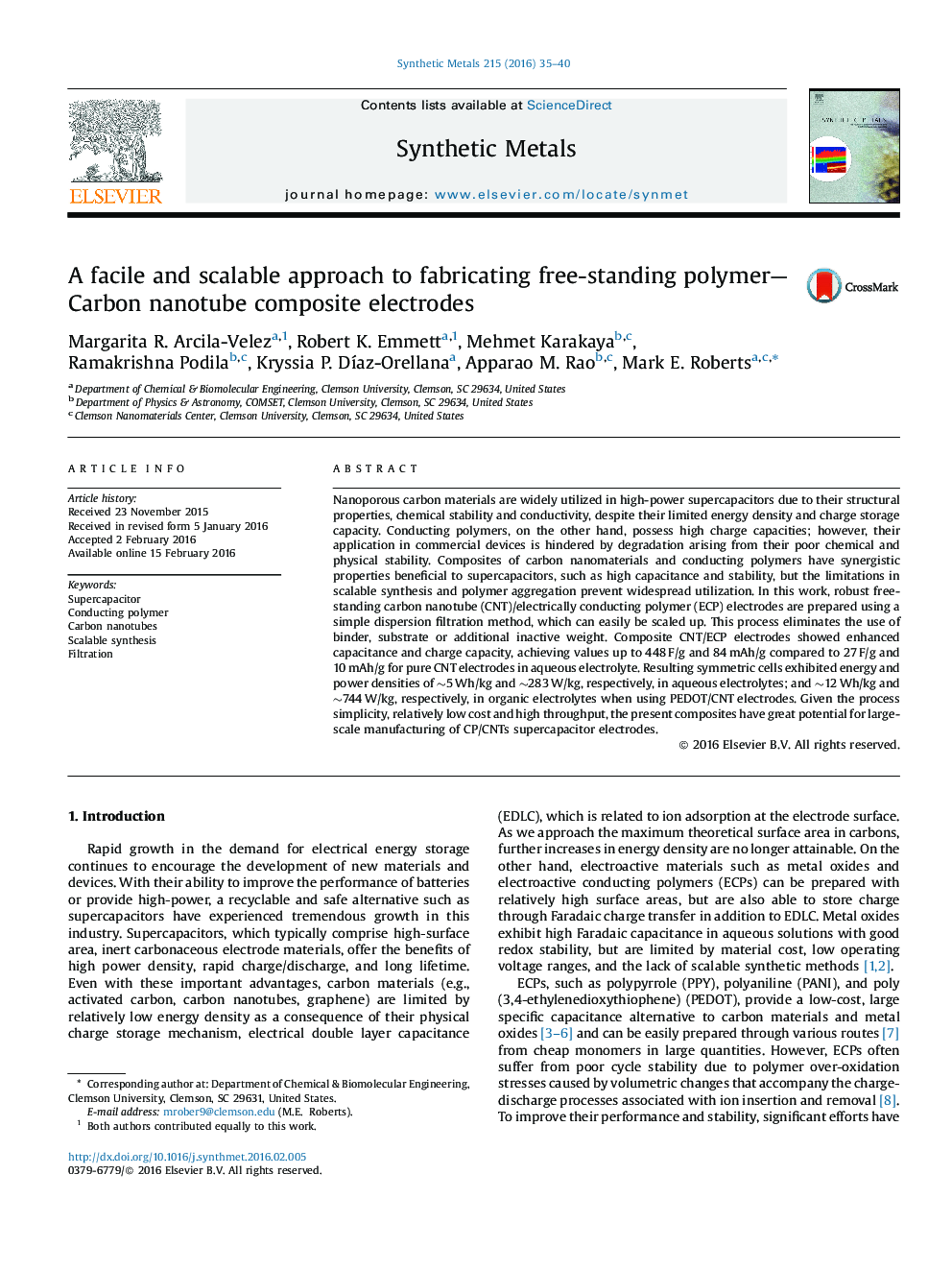| Article ID | Journal | Published Year | Pages | File Type |
|---|---|---|---|---|
| 1440246 | Synthetic Metals | 2016 | 6 Pages |
•Free-standing electrodes were fabricated using a simple, scalable filtration method.•Carbon nanotube (CNT)/conducting polymer (ECP) capacitor electrodes were prepared.•The need for non-conductive binder and/or conductive substrates is eliminated.•CNT/ECP electrodes showed high capacitance (448 F/g) and charge capacity (84 mAh/g).•PEDOT/CNT symmetric cells exhibit energy and power density of 12 Wh/kg and 744 W/kg.
Nanoporous carbon materials are widely utilized in high-power supercapacitors due to their structural properties, chemical stability and conductivity, despite their limited energy density and charge storage capacity. Conducting polymers, on the other hand, possess high charge capacities; however, their application in commercial devices is hindered by degradation arising from their poor chemical and physical stability. Composites of carbon nanomaterials and conducting polymers have synergistic properties beneficial to supercapacitors, such as high capacitance and stability, but the limitations in scalable synthesis and polymer aggregation prevent widespread utilization. In this work, robust free-standing carbon nanotube (CNT)/electrically conducting polymer (ECP) electrodes are prepared using a simple dispersion filtration method, which can easily be scaled up. This process eliminates the use of binder, substrate or additional inactive weight. Composite CNT/ECP electrodes showed enhanced capacitance and charge capacity, achieving values up to 448 F/g and 84 mAh/g compared to 27 F/g and 10 mAh/g for pure CNT electrodes in aqueous electrolyte. Resulting symmetric cells exhibited energy and power densities of ∼5 Wh/kg and ∼283 W/kg, respectively, in aqueous electrolytes; and ∼12 Wh/kg and ∼744 W/kg, respectively, in organic electrolytes when using PEDOT/CNT electrodes. Given the process simplicity, relatively low cost and high throughput, the present composites have great potential for large-scale manufacturing of CP/CNTs supercapacitor electrodes.
Graphical abstractFigure optionsDownload full-size imageDownload as PowerPoint slide
